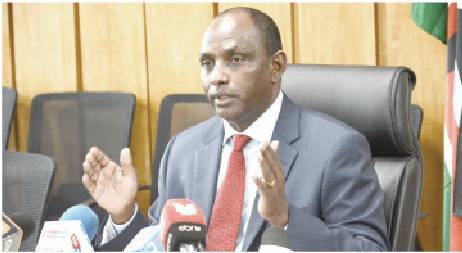Plan to cap debt at 55pc of GDP raises concerns
By Noel.Wandera, April 12, 2022The government has proposed to peg its borrowing on the gross domestic product (GDP) amid concerns that the move may prompt the debt stock to surge beyond the Sh9 trillion ceiling.
In his budget statement last week, National Treasury Cabinet Secretary Ukur Yatani submitted that the ceiling is fixed at 55 per cent of debt to GDP in present value terms, arguing that the current limitation is inhibitive to service provision and effects of external shocks.
“The current debt ceiling has constrained public funding of projects and failed to consider the effects of external shocks on the economy,” Yatani said while urging Parliament to amend the Public Management Finance (PMF) Act and align it with the new position.
Previous frustrations
Michael Mburugu, regional tax partner at PFK Consulting told the Business Hub yesterday that the new measures, if assented to by Parliament, would be an easy way to raise the debt ceiling to Sh12 trillion, as has been desired by the executive, and avoid previous frustrations and public displeasure encountered every time they want to raise the ceiling.
“You will recall that every time the Treasury has gone to Parliament, they have been frustrated. Attempts to raise the debt ceiling have also attracted negative views and reactions from the public,” he said.
Mburugu said the method is scientific and will ensure that at any one time the ceiling does not surpass the 55 per cent to GDP mark, though he questioned its accuracy in terms of measuring absolute numbers, saying it could also be leeway to over-borrowing. The CS told Parliament the new proposal was in line with internationally accepted conventional practice and has time-bound remedial measures requiring the CS to report to parliament wherever the debt levels go beyond the threshold.
“This approach ensures that debt remains within sustainable levels, entrenches accountability and transparency. I have forwarded to this August house the necessary changes to the Public Management Finance Act to align ourselves to this desired position and request that the house considers it favourably,” said Yatani.
Samuel Nyandemo, an economics lecturer at the University of Nairobi observed that Kenya has already surpassed the 50 per cent mark saying the country is living beyond its means. “To be fair we need to have a ceiling at 50 per cent. This means we are currently living beyond our means and Parliament is to blame for this. It keeps on changing goalposts,” he said.
National Assembly has been under pressure from the executive to scale up the debt ceiling to Sh12 trillion to give the National Treasury headroom for borrowing. The ambitious Sh3.3 trillion budget unveiled by Yatani last week is President Uhuru Kenyatta’s last in a 10 years, the period that has seen the total budget grow to Sh23 trillion.
Domestic borrowing
Financial year 2022/23 will have a fiscal deficit of Sh862.5 billion, equivalent to 6.2 per cent of GDP. It will be financed through a net external Sh280.7 billion, equivalent to 2 per cent of GDP and net domestic borrowing of Sh581.7 billion equivalent to 4.2 per cent of GDP.
When he came to power nine years ago, the President inherited a Sh4.05 trillion debt from the Kibaki administration and has since doubled it on an increased appetite for mega-projects like ports, railway networks, energy projects and rehabilitation of various facilities
More Articles

